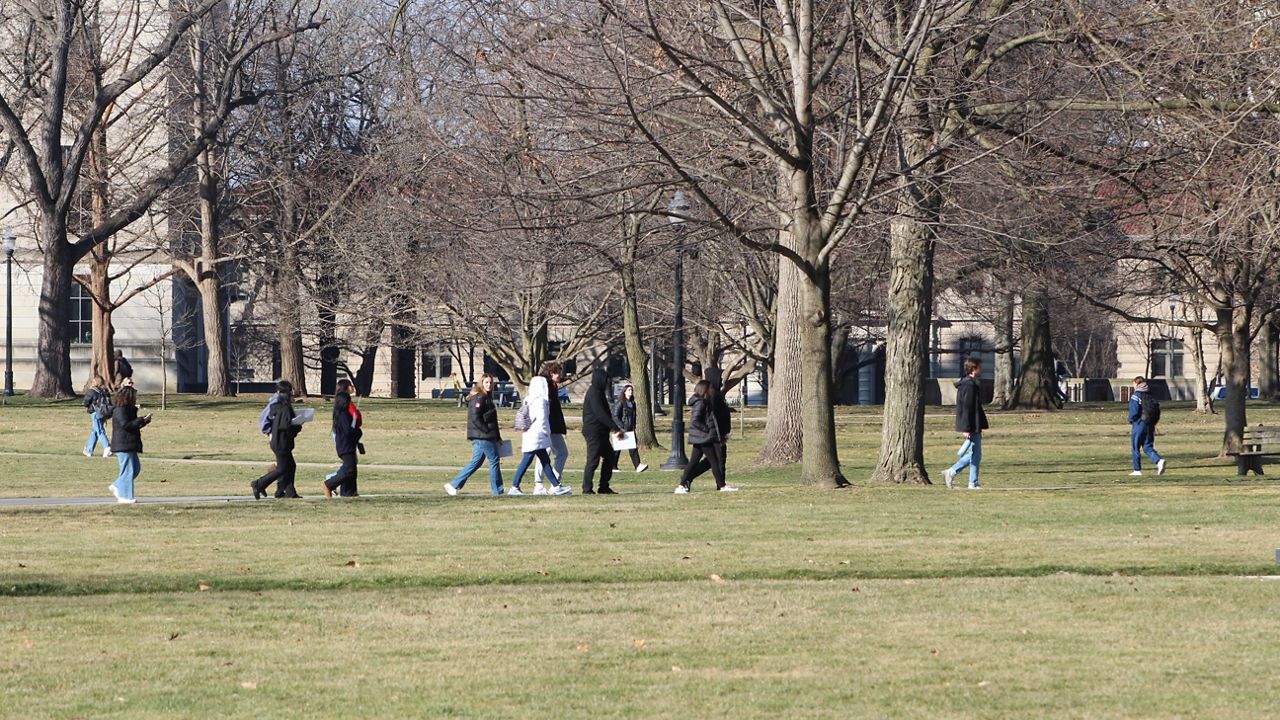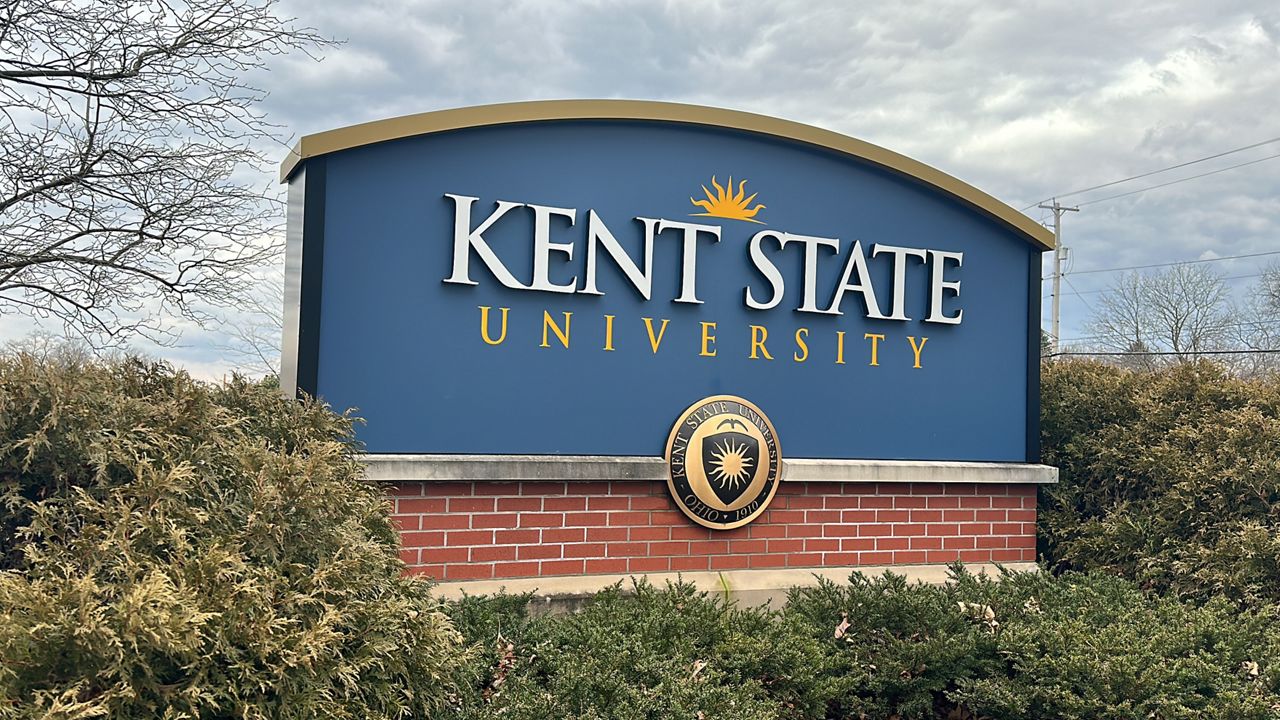TROTWOOD, Ohio — In the corner of her classroom, towering over both her and her fifth-grade students, is the newest tool in Daniell Cossey’s STEM curriculum.
Just two months after its installation, greenery is already cascading from its walls as the class readies itself for its first harvest and the home-grown feast that will come with it.
Cossey’s is the first classroom in the Trotwood-Madison school district to adopt the Green Bronx Machine curriculum, which gets aeroponics tower gardens into classrooms across the country. The machine, which requires no soil, provides its own light, and recycles its water is a fast-growing, self-sustaining method taking up far less space and resources as traditional gardening.
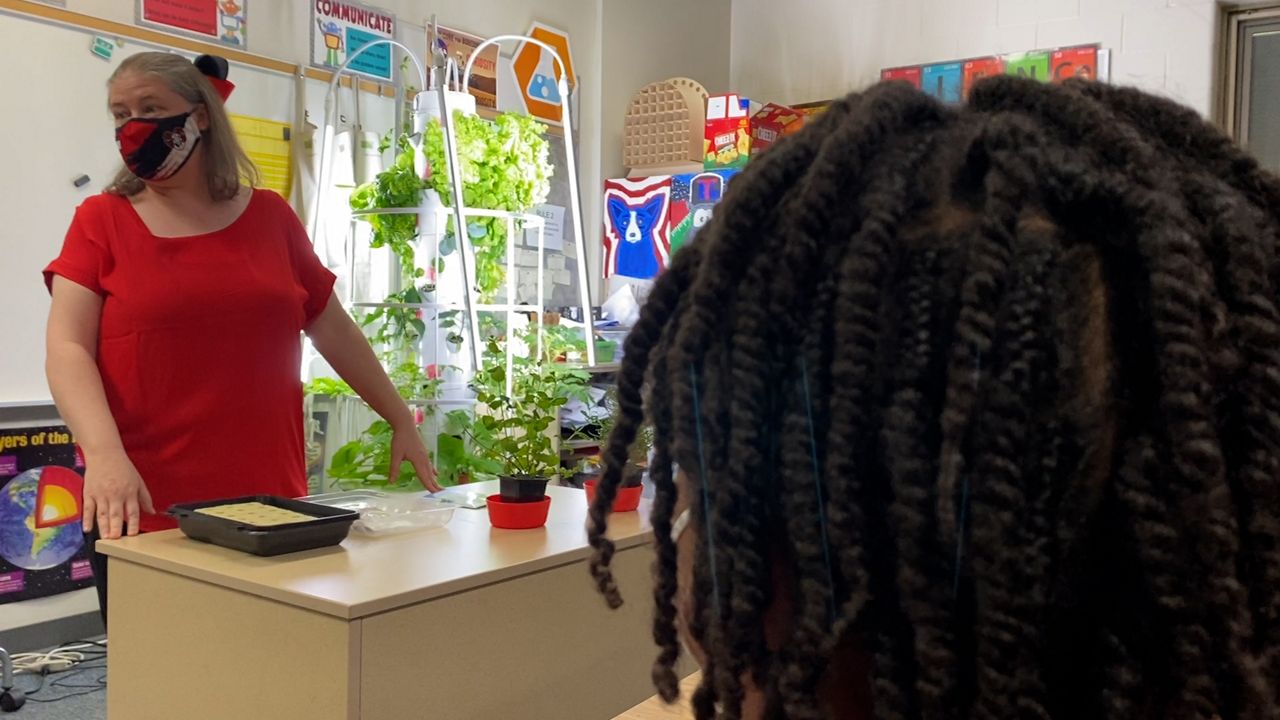
“When they’re first starting out, it takes about a gallon a week," said Cossey about the tower. "Now that they’re bigger, they’ll do about two gallons,”
Through the program, classes like Cossey’s can get hands-on lessons growing and cultivating the vegetables and herbs in the machine, while also learning about conservation and alternative methods of growing.
For Mayor Mary McDonald, the best part of the program is where all this food is going, right back to the community that grew it.
“Food insecurity can touch any community,” she said. “That’s what we focused on here in Trotwood.”
Trotwood’s last grocery store closed in 2019. Since then it's been harder to access fresh, healthy, affordable food, especially for those with limited transportation. Meanwhile, across Montgomery County, Feeding America reports one in five children is considered food insecure.
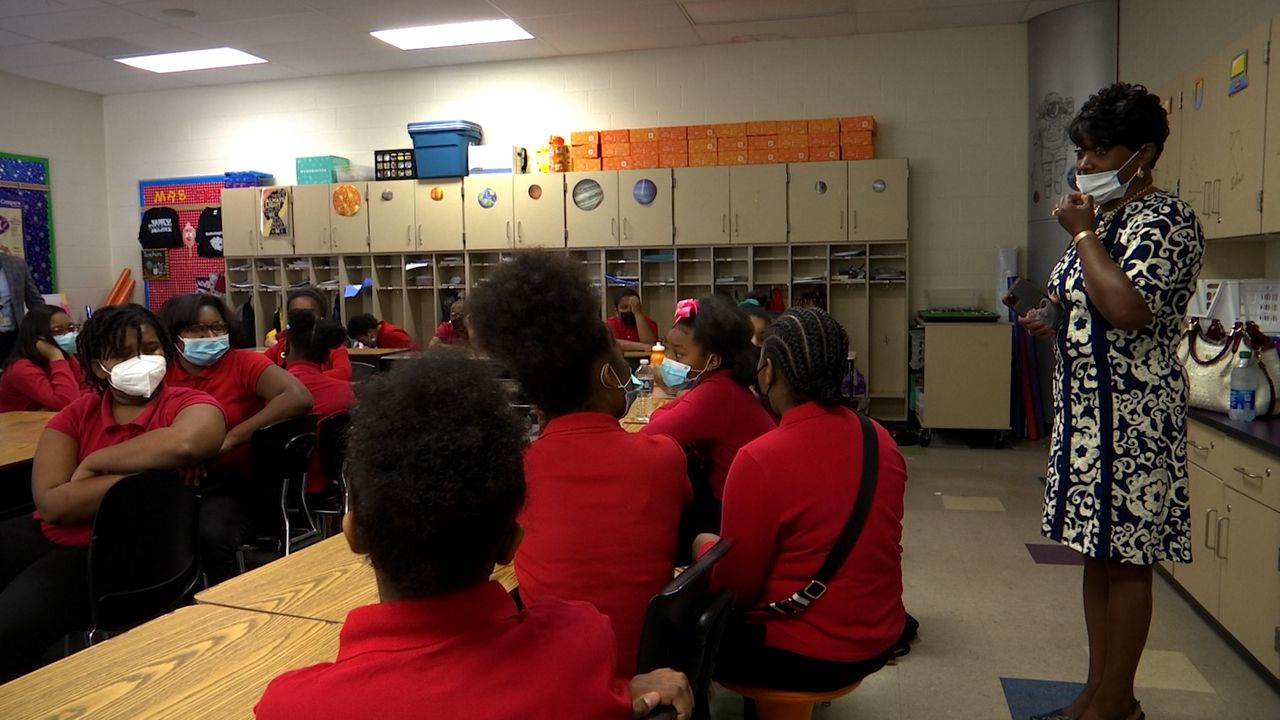
As a part of the 2021 Leadership Ohio program, McDonald said she and a cohort of leaders from across the state were looking for community-based solutions to food access in communities like hers.
“We have not always been a food desert and many communities are finding that they’re being challenged with that simply because the retail business is changing so much,” she said.
Through their research, they learned about Stephen Ritz and his Green Bronx Machine program focused on tackling a similar issue in and around New York City and sought to expand it in their community.
A $50,000 grant from Quest Diagnostics covered the cost of the garden, curriculum, materials, and the first year of seeds, and Cossey said as soon as her students got planting everything grew quickly.
“We got our first zucchini blossoms and the tomatoes began to flower,” Cossey said. “They should be ready to eat soon.”
In the meantime, Cossey’s students have been trying some of the faster-growing lettuce plants, and herbs, giving students the opportunity to try or identify some of these plants for the first time.
“Before we started growing, I asked students to make a list of list of herbs and they struggled,” Cossey said.
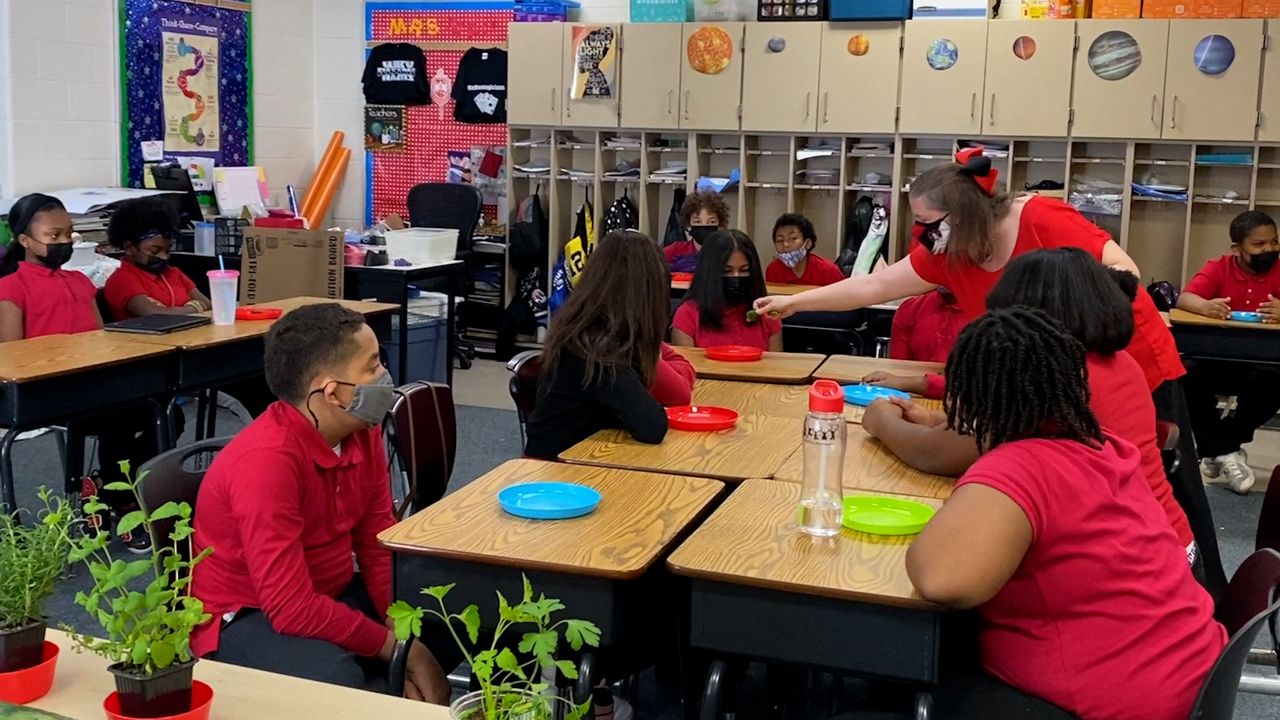
Now they’re trying the flavors in the classroom and discussing how they can use them to cook up a few healthy meals in the next weeks.
“Anybody got any delicious ideas?” Cossey asked her classroom, as the students got up to inspect the garden’s progress.
Once the food is ready to harvest, they’ll try a few recipes in class and take some home to their families, helping spread the impact throughout the community.
Meanwhile, McDonald says she’s looking forward to seeing the impact the program can have once it’s implemented for a full school year.
“We can see future engineers coming out of this simply because this is the wave of the future,” she said. “We’re not necessarily going to be growing things in the grounds, we’re going to be using hydroponics and we’re going to be using these kinds of machinery to be able to provide food of the future."







